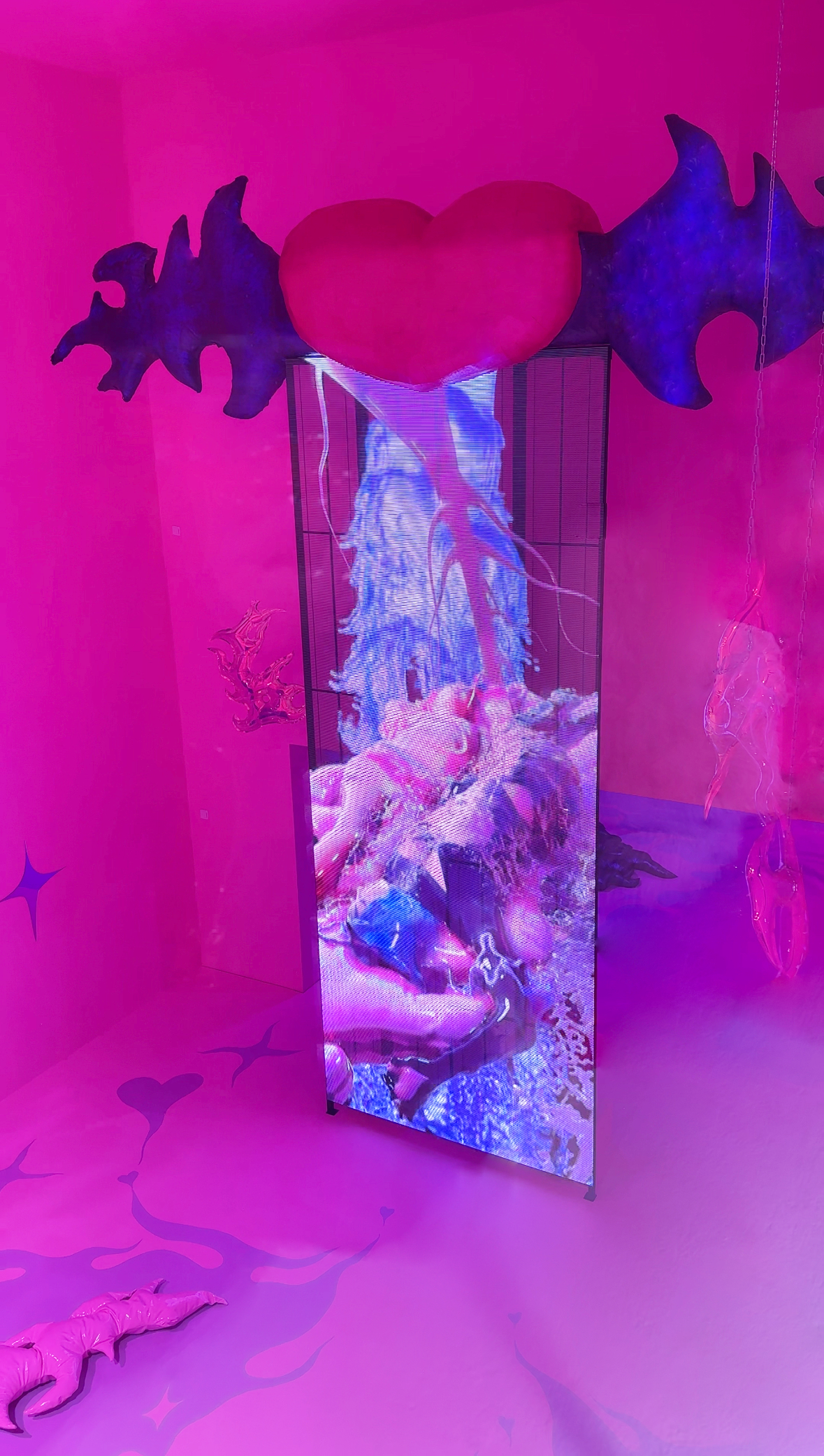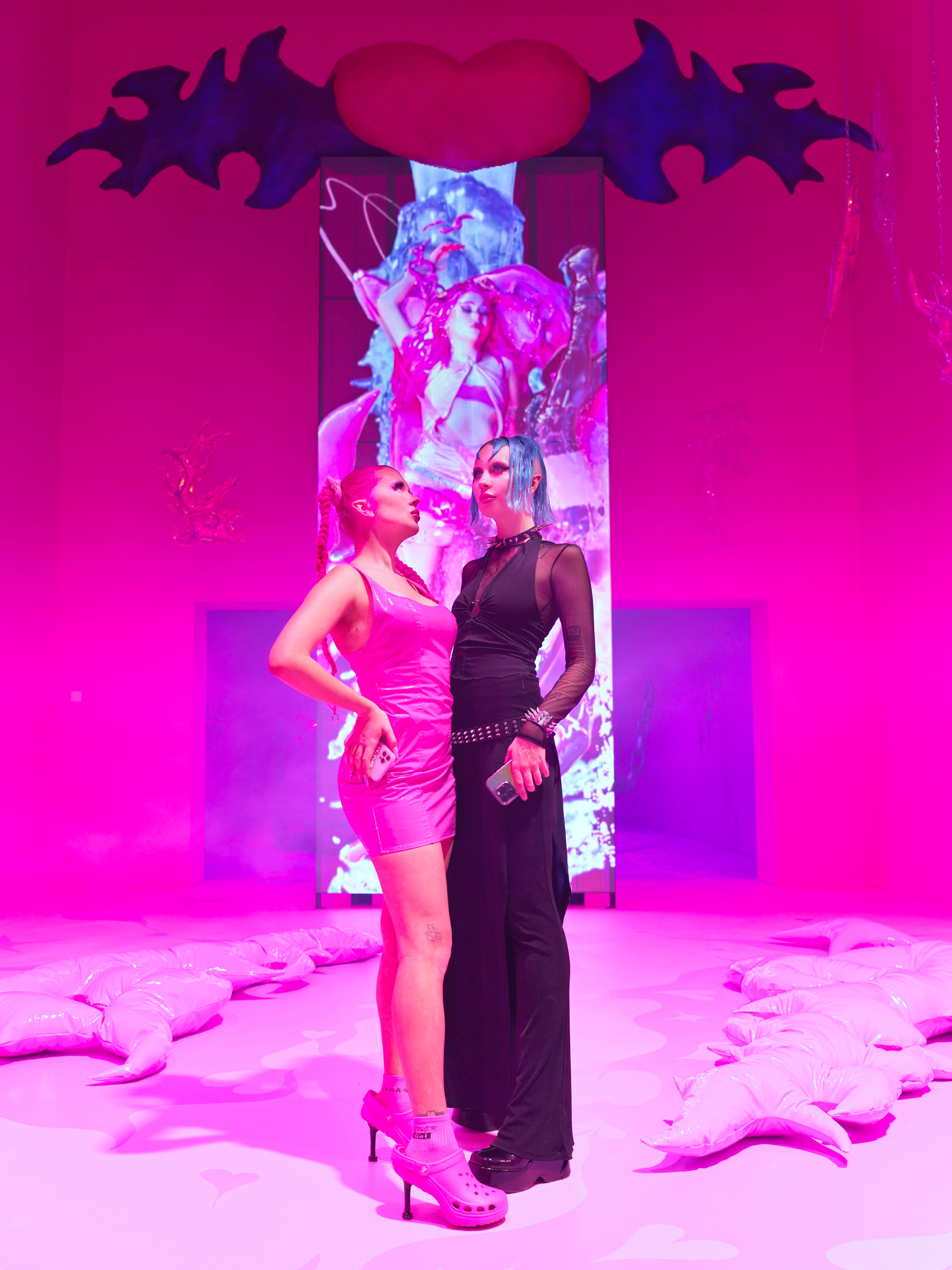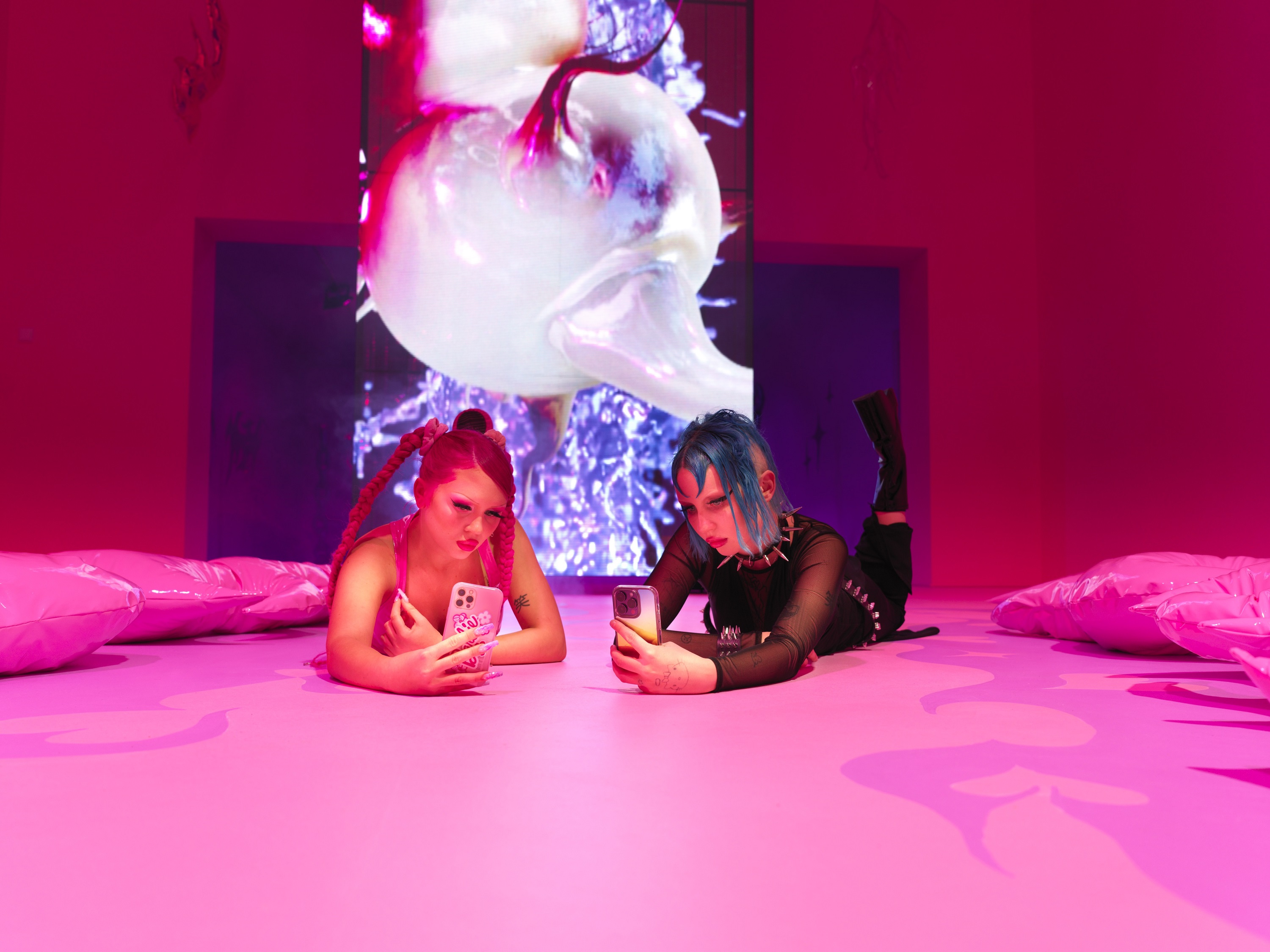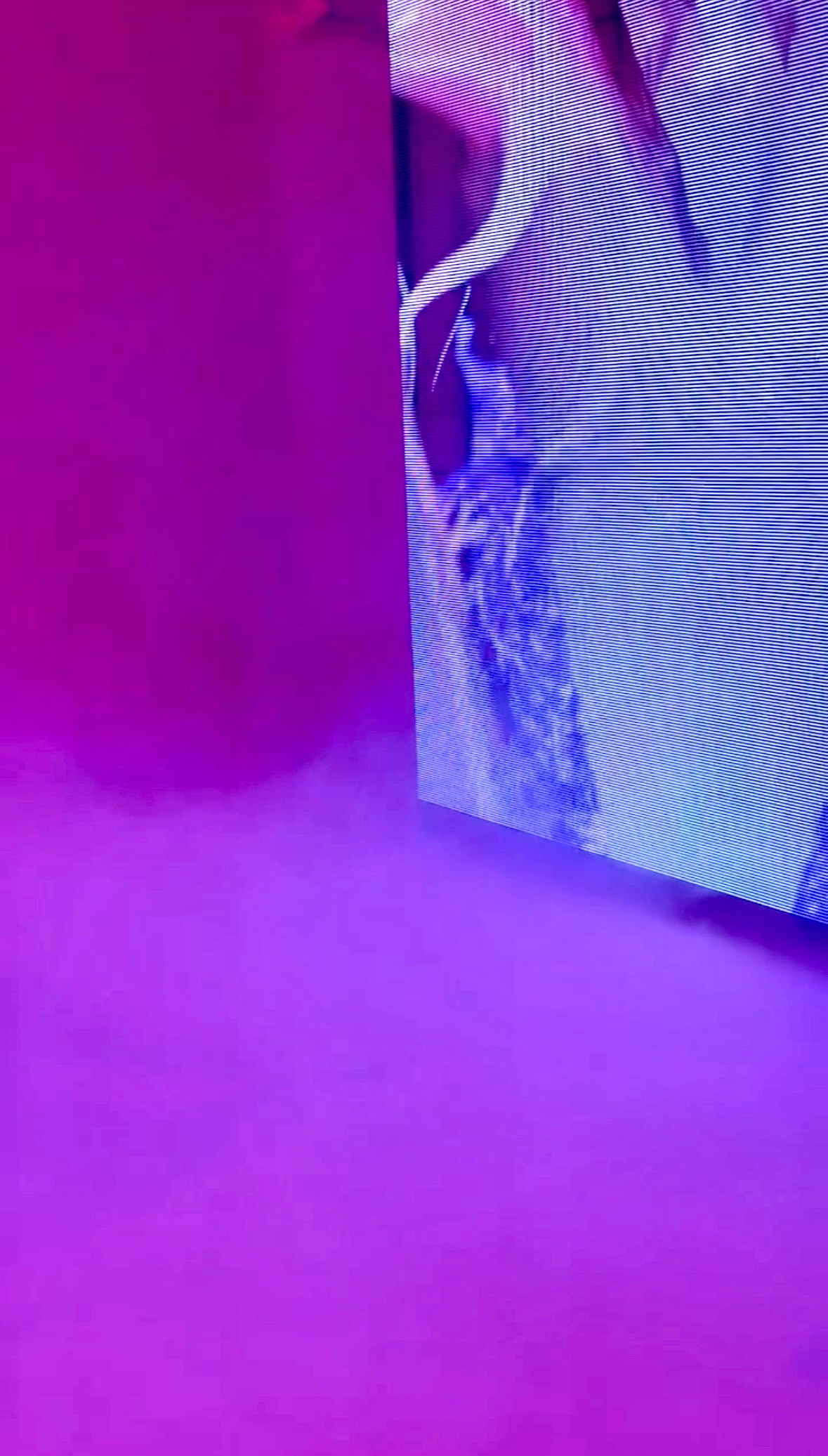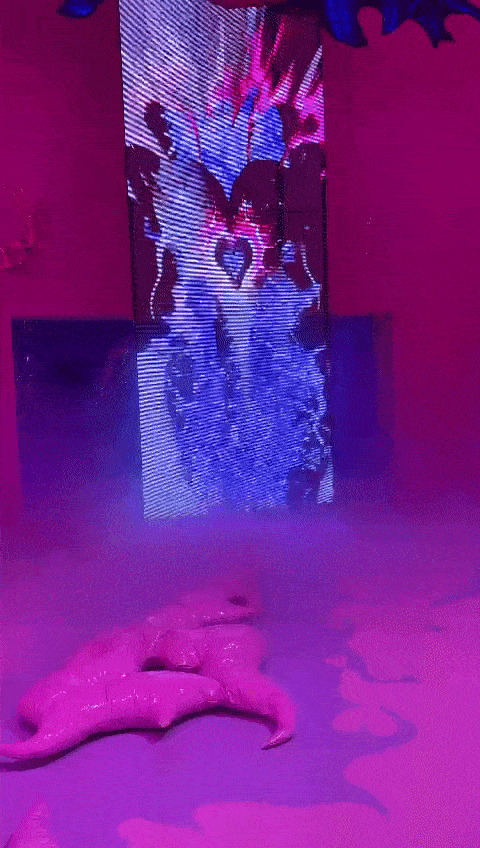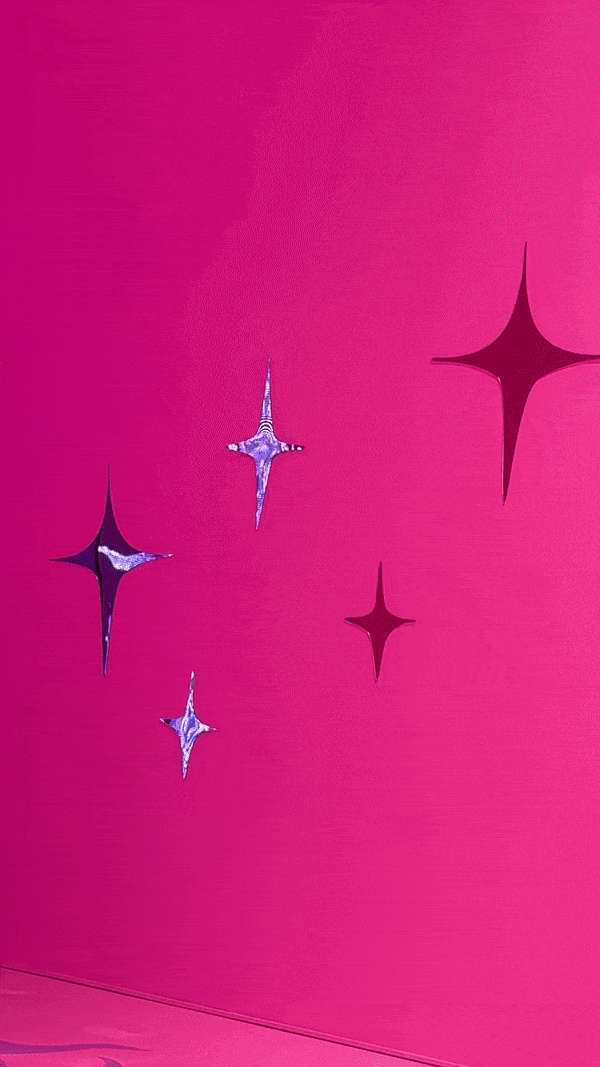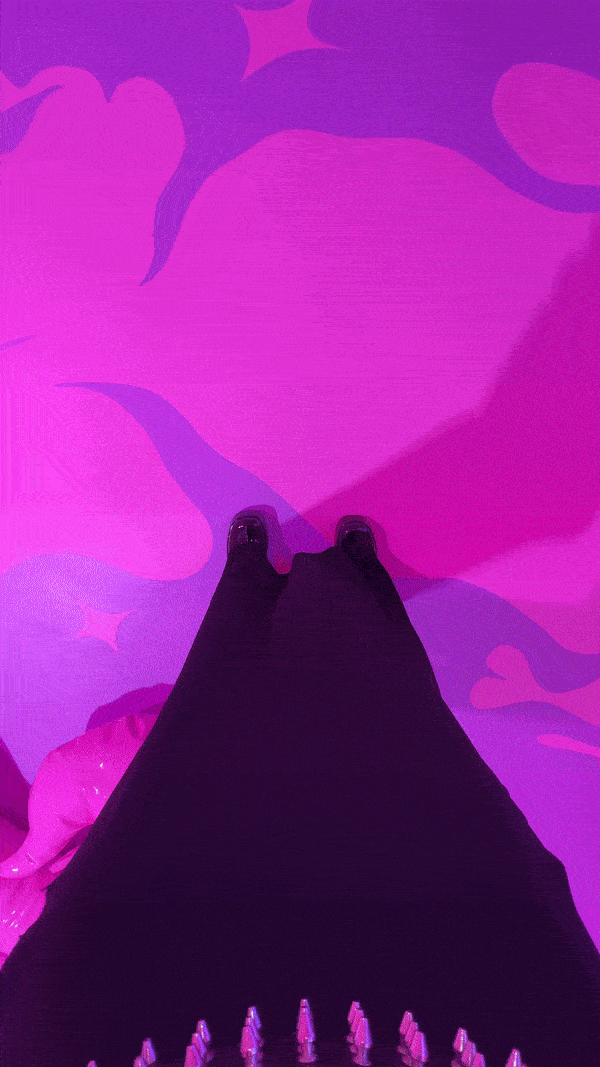𝒃𝒆𝒚𝒐𝒏𝒅 𝒕𝒉𝒆 𝒘𝒂𝒕𝒆𝒓𝒇𝒂𝒍𝒍
𝒍𝒐𝒔𝒕 𝒊𝒏 𝒕𝒉𝒆 𝒔𝒕𝒓𝒆𝒂𝒎 𝒐𝒇 𝒄𝒐𝒏𝒄𝒊𝒐𝒖𝒔𝒏𝒆𝒔𝒔
exhibited at and commissioned by OOEK
Linz (AT): OK Linz Center for Contemporary Art
solo position in collaboration with Lea Neckel
curated by Maria Venzl & Alfred Weidinger
Linz (AT): OK Linz Center for Contemporary Art
solo position in collaboration with Lea Neckel
curated by Maria Venzl & Alfred Weidinger
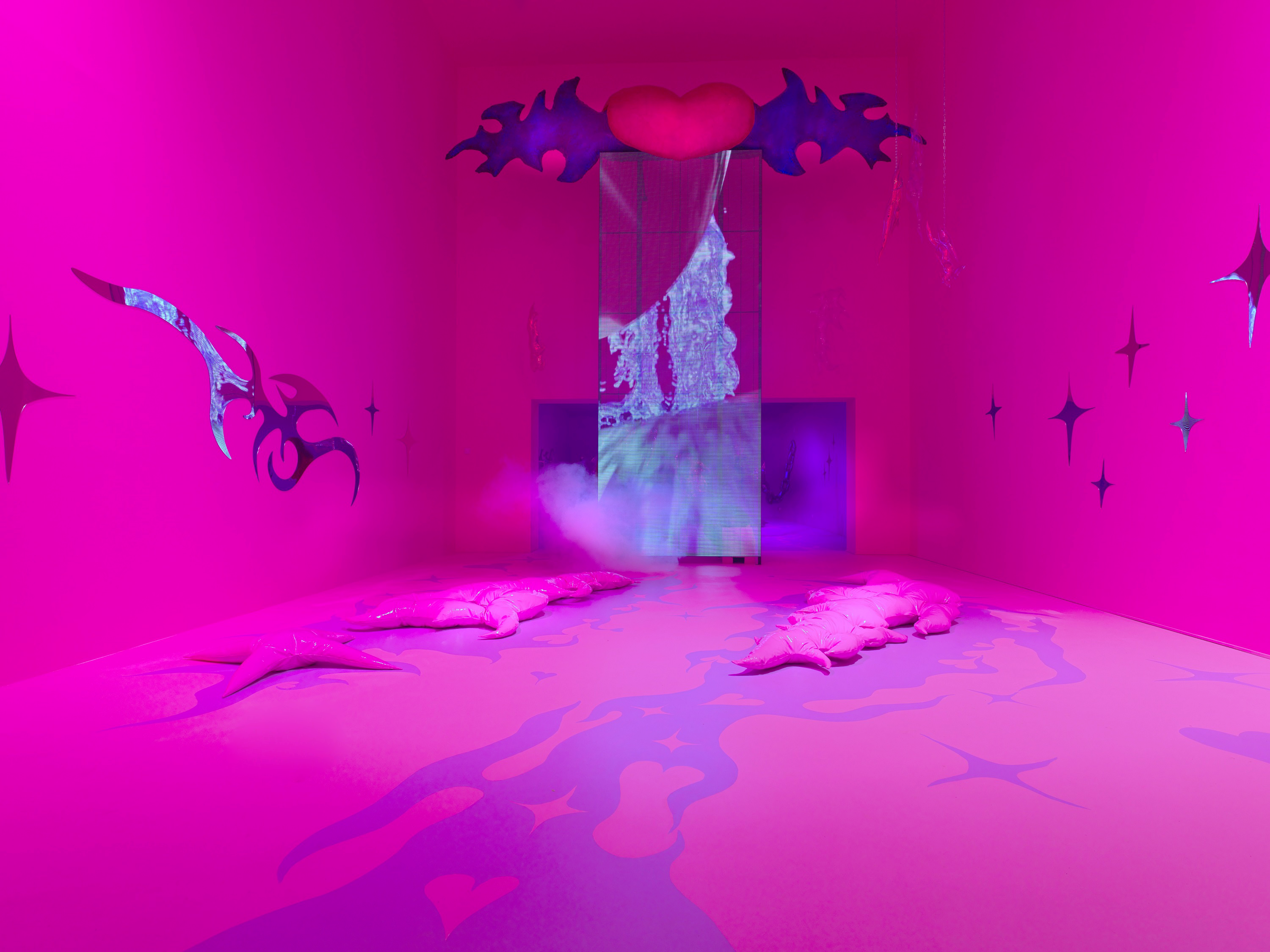
Based on the longing for liberation and community, they develop emotional exxxperiences based on the utopian potential of the internet.
In their work "˚₊‧。☆・゚: *𓆩♡𓆪・゚:* beyond the waterfall *:゚𓆩♡𓆪 *:゚・☆。‧₊˚lost in the stream of consciousness" the concept of fluidity is explored to the fore and break through the conventional notions of binary. The installation symbolizes binary in two spaces, connected and dissolved by the waterfall. The focus is on emphasizing community at all levels and using the potential of technology to transcend physical limitations and generate a new vision of the future in the collective consciousness.
In their work "˚₊‧。☆・゚: *𓆩♡𓆪・゚:* beyond the waterfall *:゚𓆩♡𓆪 *:゚・☆。‧₊˚lost in the stream of consciousness" the concept of fluidity is explored to the fore and break through the conventional notions of binary. The installation symbolizes binary in two spaces, connected and dissolved by the waterfall. The focus is on emphasizing community at all levels and using the potential of technology to transcend physical limitations and generate a new vision of the future in the collective consciousness.
Utilizing femme and queer signifiers and referring to Haraway's cyborg manifesto, the internet is rematerialized and presented as a refuge for marginalized groups, especially the queer community. By deconstructing the boundaries between human and machine, gender binaries, self and other, liberation cannot be confined to the patriarchal framework of gender. Complex humanity and gender are intangible and multifaceted, and technological advances continue to transcend traditional gender boundaries.
To truly transcend these limitations in our thinking and discourse, we must open ourselves to new ways of conceptualizing and understanding the physical space of gender.
The rooms of the OK become an extended virtual reality, immersed in the aesthetics of the digital subculture, it spills into the room as if it has sprung from a source, overflows and overlaps, merging with the environment like the layers of a Photoshop file.
The rooms of the OK become an extended virtual reality, immersed in the aesthetics of the digital subculture, it spills into the room as if it has sprung from a source, overflows and overlaps, merging with the environment like the layers of a Photoshop file.

